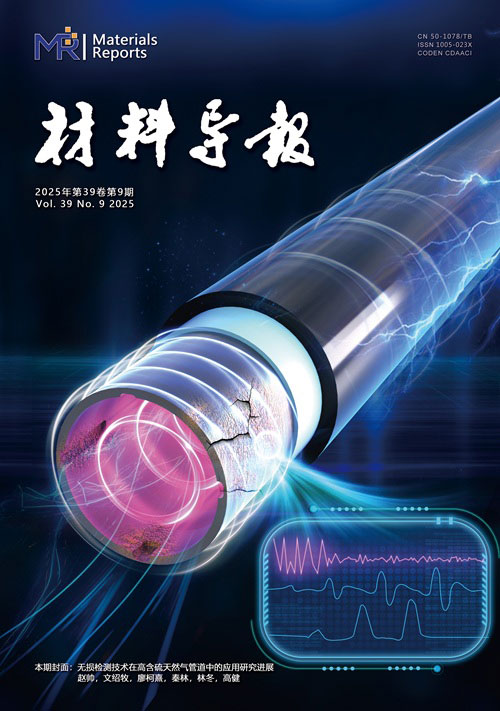|
|
Elastocaloric Effects in Shape Memory Alloys:a Review and New Perspectives
YUAN Bo, ZENG Lei, QIAN Mingfang, ZHANG Xuexi, GENG Lin
Materials Reports
2018, 32 (17):
3033-3040.
DOI: 10.11896/j.issn.1005-023X.2018.17.016
The traditional gas-compression refrigeration technology can no longer meet the requirements of human society for environmental protection and energy conservation. The development of new refrigeration technology has drawn increasingly growing attention in recent years. Compared to the traditional gas-compression refrigeration technique, solid-state cooling technology has aroused extensive interests owing to the high efficiency and environmental friendliness. The principle of solid-state cooling is to change the environment of external field (such as magnetic field, electric field and stress field) of a material, and change the properties (structure, magnetic moment, etc.) of the material accordingly, thus produce the corresponding caloric effects, namely magnetocaloric effect, electrocaloric effect and mechanocaloric effect (elastocaloric effect, barocaloric effect). The key for promoting the solid-state cooling technology lies in the development of room temperature caloric materials that exhibit giant entropy change, wide working temperature interval and high operation stability. Among them, the elastocaloric cooling based on the elastocaloric effect (eCE) induced by uniaxial cyclic stress in shape memory alloys (SMAs) is one of the most promising solid-state cooling technology.
The eCE in SMAs originates from the martensite transformation enthalpy, i.e. in the process of stress-induced martensite transformation and inverse transformation, the material releases and absorbs the latent heat of phase transformation, and the solid refrigeration can be realized by means of refrigeration cycle device. In the course of the study, elastocaloric cooling technology presemts many advantages, including large and reversible adiabatic temperature change, simple stress-driven method and wide application range of temperature. However, the eCE materials are still exist problems like short fatigue life, large hysteresis loss and uneven strain distribution. In 2014, the elastocaloric cooling technology was ranked as the first of 17 new alternative technologies for gas-compression cooling by U.S. Department of Energy, which has been recognized as the most promising cooling systems.
Rencntly, scientists have measured large caloric effects in many SMAs near room temperature, such as Cu-Zn-Al, Ti-Ni-(Cu), Fe-Pd, Ni-Mn-Sn-(Cu), Ni-Mn-In-Co. The adiabatic temperature change ΔTad and the isothermal entropy change ΔSiso are the main measuring parameters of eCE, which can be obtained by direct or indirect methods. ΔSiso can be calculated by the stress-strain curve of SMAs and Maxwell’s equation, which can characterize the eCE indirectly. Moreover, due to the simple driving method of the eCE, a more convenient method is measuring the ΔTad directly, which means measure the temperature before and after martensite transformation by a precise temperature measuring equipment. This method can not only characterize the magnitude of eCE directly, but also acquire the changing details in the process of eCE, like the trend or location of temperature changes in eCE materials.
In this article, the research progress of eCE in traditional SMAs (Cu-, Ni-Ti- and Fe-based) and ferromagnetic SMAs (Ni-Mn-based) are reviewed. The pros and cons of various SMAs for eCE are analyzed. Finally, the development prospects of elastocaloric materials is proposed.
Reference |
Related Articles |
Metrics
|
|



 渝公网安备50019002502923号 © Editorial Office of Materials Reports.
渝公网安备50019002502923号 © Editorial Office of Materials Reports.